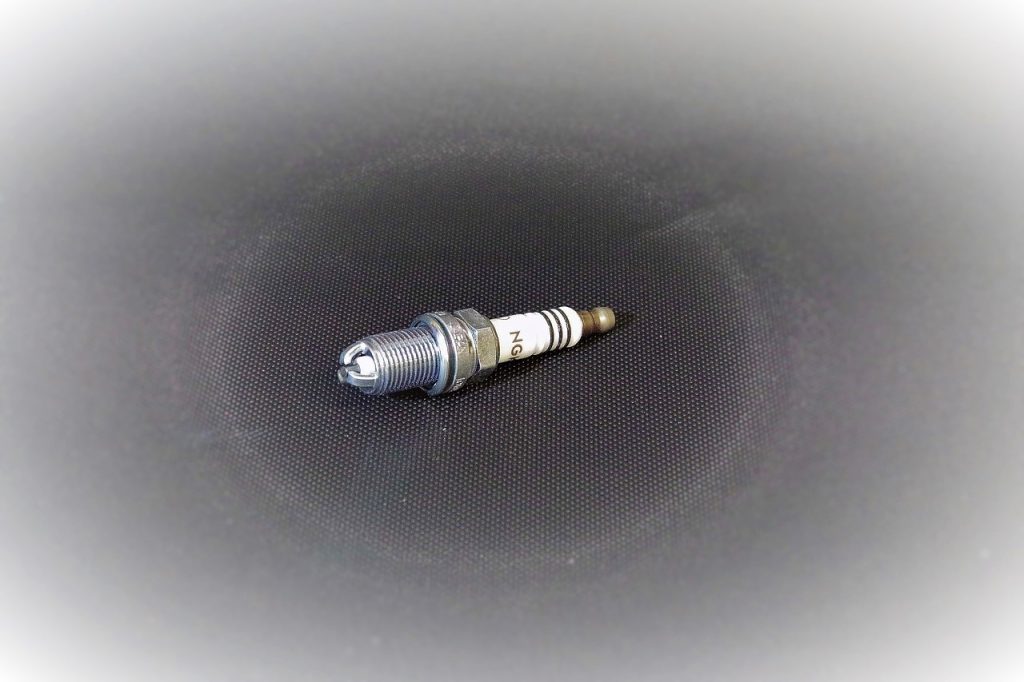When it comes to automotive performance and maintenance, the term “rough idle” is one that requires closer attention. It’s a phenomenon that most vehicle owners have encountered at some point in their driving experience. If you’re sitting behind the wheel and suddenly, the engine behaves erratically, causing your vehicle to shake and vibrate uncomfortably. That is what we refer to as a “rough idle.”
While it may seem like a minor inconvenience, a rough idle can be indicative of greater issues in your vehicle’s engine. It’s not just a matter of discomfort but rather a key concern for the proper functioning of your car’s engine.
In this article, we’ll take a closer look at rough idling engines and answer a commonly asked question: Can spark plugs be the root cause of this vexing problem?
Understanding Spark Plugs
Spark plugs may be small in size but their role in the combustion process is crucial.
In essence, spark plugs are small yet important ignition devices. They’re responsible for creating the spark needed to ignite the air-fuel mixture in your engine’s cylinders. This ignition process is what keeps your engine running.
It’s important to point out that not all spark plugs are created equal. There are several types out there. However, for the sake of simplicity, let’s focus on the three main spark plugs:
- Conventional Spark Plugs: These are the standard spark plugs that have been around for ages. They get the job done efficiently but they might require more frequent replacement.
- Platinum Spark Plugs: Platinum spark plugs have a platinum center electrode which not only provides a more stable spark but also lasts longer than their conventional counterparts.
- Iridium Spark Plugs: Iridium spark plugs take it up a notch in terms of longevity. With a tiny iridium center electrode, they offer excellent performance and a significantly extended lifespan.
Why should you care about the type of spark plug in your engine? The type of spark plug you use can influence your engine’s performance, fuel efficiency, and even emissions. In short, the right spark plug can make a noticeable difference in your car’s overall performance.
Signs of a Rough Idle
What are the telltale signs of a rough idle? Recognizing the problem is the first step toward finding a solution.
Common symptoms of rough idle
So, what does a rough idle actually feel like? Here are some common symptoms to watch out for:
- Unsettling Vibrations: One of the most noticeable signs is a pronounced vibration throughout the vehicle, especially when your car is stationary or idling.
- Inconsistent Engine Revs: Your engine might display erratic behavior by revving up and down on its own, often accompanied by an uneven or lumpy sound.
- Misfires: Misfires can be detected through a noticeable stutter or hesitation in the engine’s performance. It’s like a hiccup in the engine’s rhythm.
- Fluctuating RPM (Revolutions Per Minute): If you notice your RPM gauge bouncing up and down while the car is at a standstill, it’s a strong indication of a rough idle.
Why rough idle is a cause for concern
You might be wondering, “Why should I be concerned about a little shaking or engine hesitation?” Well, the rough idle is often a symptom of underlying issues within your vehicle’s engine. These issues can range from minor annoyances to potentially costly problems:
- Reduced Fuel Efficiency: When your engine isn’t running smoothly, it’s burning more fuel than it should be. This means a decreased fuel efficiency.
- Increased Emissions: A rough idle can result in higher emissions. This is not just bad for the environment but can also lead to compliance issues if your vehicle needs to pass emissions tests.
- Engine Damage: Over time, rough idling can put extra strain on various engine components, potentially causing damage and necessitating expensive repairs.
- Safety Concerns: In extreme cases, a rough idle can compromise your ability to control the vehicle which can pose safety hazards.
The Spark Plug’s Impact on Idle Quality
Let’s talk about how the seemingly unassuming spark plugs can have a profound impact on your car’s idle quality.
Your car’s engine consists of hundreds of small parts, each serving a specific purpose. Among these are spark plugs which have the crucial role of the conductor. They are responsible for the ignition process with impeccable timing.
When a spark plug is in pristine condition, it generates a strong, consistent spark that ignites the air-fuel mixture in the engine’s cylinders with precision. This ensures that each combustion event happens smoothly and efficiently. As a result, the engine delivers power seamlessly and functions as it should.
Role of spark plug condition in idling
The condition of your spark plugs can significantly affect the proper functioning of the engine. When spark plugs are damaged, they may not produce the spark needed for efficient combustion. This can lead to incomplete ignition, causing misfires, unburned fuel, and, you guessed it, a rough idle.
Spark plug wear and tear
Spark plugs are subjected to a lot of heat, pressure, and wear over time. There are two primary culprits when it comes to spark plug issues:
- Fouling: This occurs when deposits from the combustion process build up on the spark plug’s tip. Think of it like trying to light a fire with a dirty matchstick – the result is weak or no ignition, leading to rough idling.
- Gap erosion: The gap between the spark plug’s center electrode and the ground electrode is critical for generating a spark. Over time, this gap can widen due to erosion, making it more challenging for the spark plug to do its job effectively.
When spark plugs have these challenges, they can’t create the optimal spark needed for smooth engine operation, especially during idle.
The connection between spark plug issues and rough idle
So, how does all of this relate to a rough idle? When spark plugs aren’t firing as they should, your engine can’t maintain a stable and consistent idle speed. As a result, you experience the vibrations, the uneven engine revs, and the occasional misfires.
Diagnosing Spark Plug-Related Rough Idle
Now that we have a good understanding of the role that spark plugs play in your car’s idle quality, it’s time to look at how we can diagnose whether those spark plugs are indeed the culprits behind your rough idle.
Tools and equipment needed for diagnosis
Before we begin, let’s make sure we have the right tools for the job. You’ll need the following:
- Spark Plug Socket: A specialized socket designed for removing and installing spark plugs.
- Socket Wrench: To turn the spark plug socket.
- Spark Plug Gap Gauge: This nifty tool helps you check the gap between the spark plug electrodes.
- Wire Brush: Handy for cleaning off any deposits or fouling from the spark plugs.
- Replacement Spark Plugs: Just in case you discover that your current spark plugs are the issue and need replacement.
Step-by-step diagnostic process
Now, let’s walk through the steps to diagnose if your spark plugs are indeed causing that pesky rough idle. Diagnosing the problem correctly is half the battle won:
1. Inspecting spark plug condition: Begin by locating your spark plugs. These are typically found along the top of your engine, with one spark plug wire leading to each. Carefully remove each spark plug one at a time using your spark plug socket and wrench.
2. Identifying signs of fouling or damage: Examine the spark plug you’ve removed. Look for any signs of fouling, such as carbon deposits, oil, or soot. If you notice any of these, it’s an indicator that your spark plug is not performing optimally.
3. Checking for proper gap: Use your spark plug gap gauge to measure the gap between the center electrode and the ground electrode of the spark plug. Read your vehicle’s manual for the recommended gap specifications. If the gap is incorrect, it can lead to poor ignition and rough idle.
4. Cleaning or replacing spark plugs: If you find fouling or damage, it’s advisable to clean the spark plug using a wire brush or replace it with a new one, ensuring it matches your vehicle’s specifications. Be sure to tighten the spark plugs securely but not excessively when reinstalling them.
Other potential causes of rough idle
While spark plugs are a common culprit behind rough idle, they aren’t the only ones. There are other factors that could contribute to the issue, including:
- Fuel System Problems: Clogged fuel injectors or a malfunctioning fuel pump can disrupt the air-fuel mixture, leading to rough idling.
- Air Intake Issues: A dirty or clogged air filter can restrict airflow to the engine, affecting idle quality.
- Vacuum Leaks: Leaks in the vacuum system can disrupt engine performance and cause rough idling.
- Ignition System Issues: Problems with the ignition coil, wires, or distributor can also lead to rough idling.
If you’ve inspected and addressed your spark plug concerns but the rough idle persists, it is a sign that you should explore these other potential causes.
Preventive Maintenance and Care
Now that we’ve gone through the diagnostic process and discussed how spark plugs can impact your vehicle’s idle quality, it’s time to look at the proactive steps we can take. This includes taking preventive maintenance and care steps for your spark plugs.
Consistent spark plug maintenance ensures your engine stays in peak condition. Ignoring these components can lead problems further down the road, including rough idle. Regular maintenance can:
- Extend Lifespan: Routine care can significantly extend the lifespan of your spark plugs, saving you from the hassle of frequent replacements.
- Ensure Efficiency: Well-maintained spark plugs ensure efficient combustion, which translates to better fuel efficiency and lower operating costs.
- Prevent Rough Idle: By addressing issues before they worsen, you can prevent the annoyance and potential damage caused by rough idle.
How often should spark plugs be replaced?
The frequency of spark plug replacement depends on several factors, including the type of spark plug and your driving habits. As a general guideline:
- Conventional Spark Plugs: These typically require replacement every 30,000 to 50,000 miles.
- Platinum Spark Plugs: These have a longer lifespan, often reaching 60,000 to 100,000 miles before replacement is necessary.
- Iridium Spark Plugs: Iridium plugs are known for their durability and can often last beyond 100,000 miles.
You should refer to your vehicle’s owner’s manual for manufacturer-recommended replacement intervals. Moreover, factors like frequent stop-and-go city driving or towing heavy loads may require more frequent spark plug replacements.
Tips for extending spark plug lifespan
Now, let’s have a closer look at some practical tips to help you maximize the lifespan of your spark plugs:
- Use High-Quality Fuel: Opt for high-quality, clean-burning fuel to reduce carbon buildup on the spark plugs.
- Regularly Inspect and Clean: Periodically check your spark plugs for fouling or damage, and clean or replace them as needed.
- Properly Gap Spark Plugs: When replacing spark plugs, ensure the gap between the electrodes matches your vehicle’s specifications.
- Address Engine Issues Promptly: If you notice signs of engine trouble, such as misfires or reduced performance, address them promptly to prevent spark plug damage.
- Avoid Over-Tightening: Be cautious when installing spark plugs; overtightening can damage the threads and lead to leaks.
- Follow Maintenance Schedule: Stick to your vehicle’s recommended maintenance schedule, which includes spark plug replacement.

